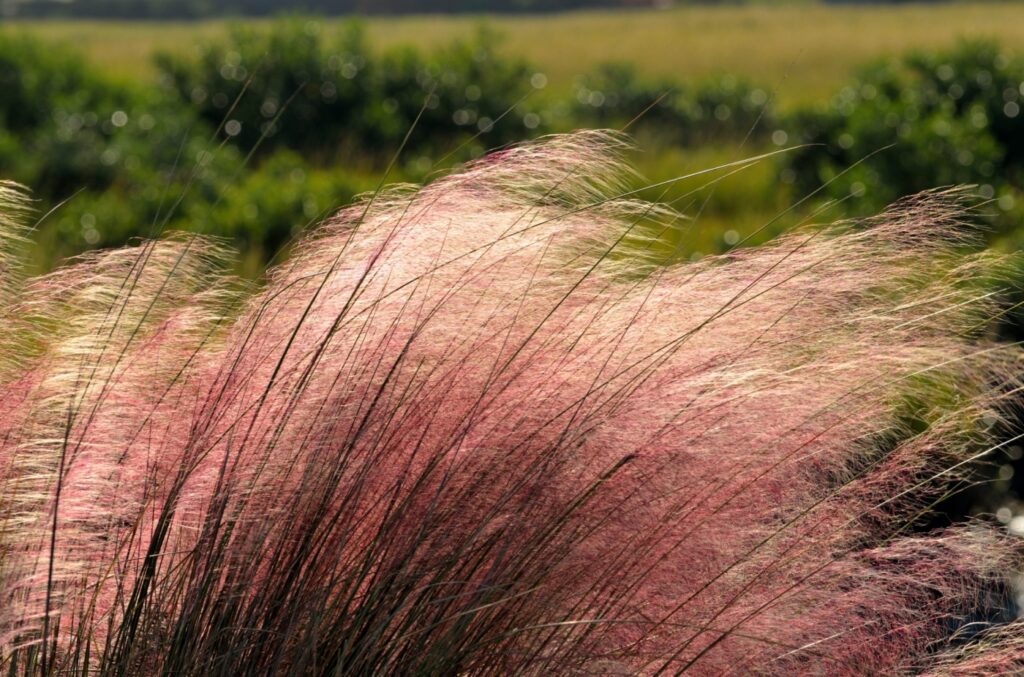
Q: I just had my slope stripped — Brazilian peppers had invaded, and they choke out everything. It is a good-sized slope and I am looking for economical and maintenance free ground cover/bushes to cover it. I have quite a few jade plants partially on it, great plants, and some aloe vera as well. What do you recommend? I was told that honeysuckle is good but requires trimming. I would like to cover as much as possible for erosion control.
A: Slopes and hillsides can present several gardening challenges. If the slope is steep and difficult to access, you will want plants that don’t require a lot of attention. Erosion is a major concern, so look at plants that have deep and/or fibrous roots, such as ornamental grasses. Drainage is usually not a concern in this case, but you will want plants that are tough and drought-tolerant.
Does your slope get at least 6 hours of sun per day? Is it exposed to strong winds? Do you want to plant barrier plants that discourage trespassers? Is irrigation already installed? Drip or sprinklers, or a combination of both?
If the slope is especially big and/or steep, you may want to consider terracing it into a series of steps. This is a lot of work, but would make planting and maintenance easier, and it will decrease erosion.
A quick internet search for “plants for hillsides” will bring up some good choices, but I noticed that there are more than a few troublesome and invasive plants on these lists as well. Non-native plants that are considered tough and well-adapted for Southern California can quickly become obnoxious. Honeysuckle is a prime example. It smells great and is a fast grower, but it will take over and you will end up with a tangled, woody mess that will provide cover for rats and other undesirable wildlife. Vinca (periwinkle) is another popular slope plant that is quick-growing but invasive.
For a list of invasive plant species, and suggested substitutes, see: plantright.org/about-invasive-plants/plant-list/
For full-sun areas, try grasses such as muhlenbergia or festuca. Grass has dense, fibrous roots that will prevent soil erosion. Salvia species (especially natives such as Clevlandii) have vibrantly colored flowers that are especially attractive to hummingbirds and butterflies. Yucca has a dramatic form and can become a focal point, though its leaves are spiny so it should be planted with this in mind.
Iceplant used to be a favorite slope planting because it is drought-tolerant and spreads quickly. Unfortunately, it provides an ideal hiding place for slugs and snails. We used it to protect our slope until we found other, more suitable plants. Once we were done with it, we just rolled it up and it came out easily. Disposing of it was another story.
Aloes are good for areas that get less sun. In the spring, flower spikes with red, yellow, orange, pink and salmon will provide visual interest and attract hummingbirds and orioles.
Please keep in mind that “low-maintenance” does not mean “no-maintenance”. Slope and hillside plantings will still need irrigation, grooming, and weeding. Make sure that you leave enough room to access your plants so you can take care of them!
Have questions? Email gardening@scng.com.
Looking for more gardening tips? Here’s how to contact the Master Gardener program in your area.
Los Angeles County
mglosangeleshelpline@ucdavis.edu; 626-586-1988; http://celosangeles.ucanr.edu/UC_Master_Gardener_Program/
Orange County
ucceocmghotline@ucanr.edu; 949-809-9760; http://mgorange.ucanr.edu/
Riverside County
anrmgriverside@ucanr.edu; 951-683-6491 ext. 231; https://ucanr.edu/sites/RiversideMG/
San Bernardino County
mgsanbern@ucanr.edu; 909-387-2182; http://mgsb.ucanr.edu/
Related Articles
Few plants compare to these colorful flowers for beauty and drought tolerance
Wildflowers and soil replacements: 5 things to do in the garden this week
How to identify bedbugs and what to do about them
Gardeners, some tips for managing the potential plant bounty of a seed rack
What’s happening with your citrus trees? Readers share their stories
